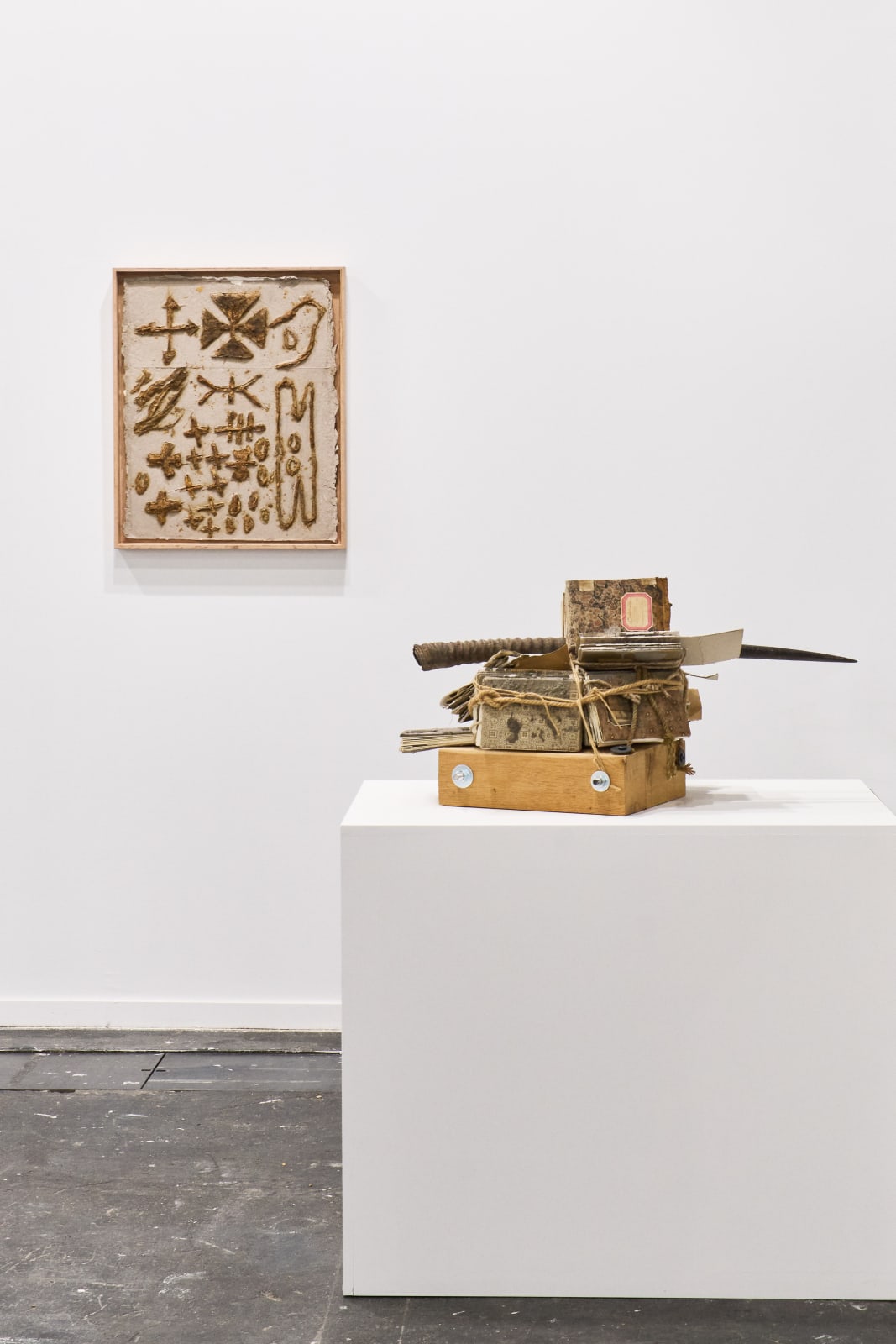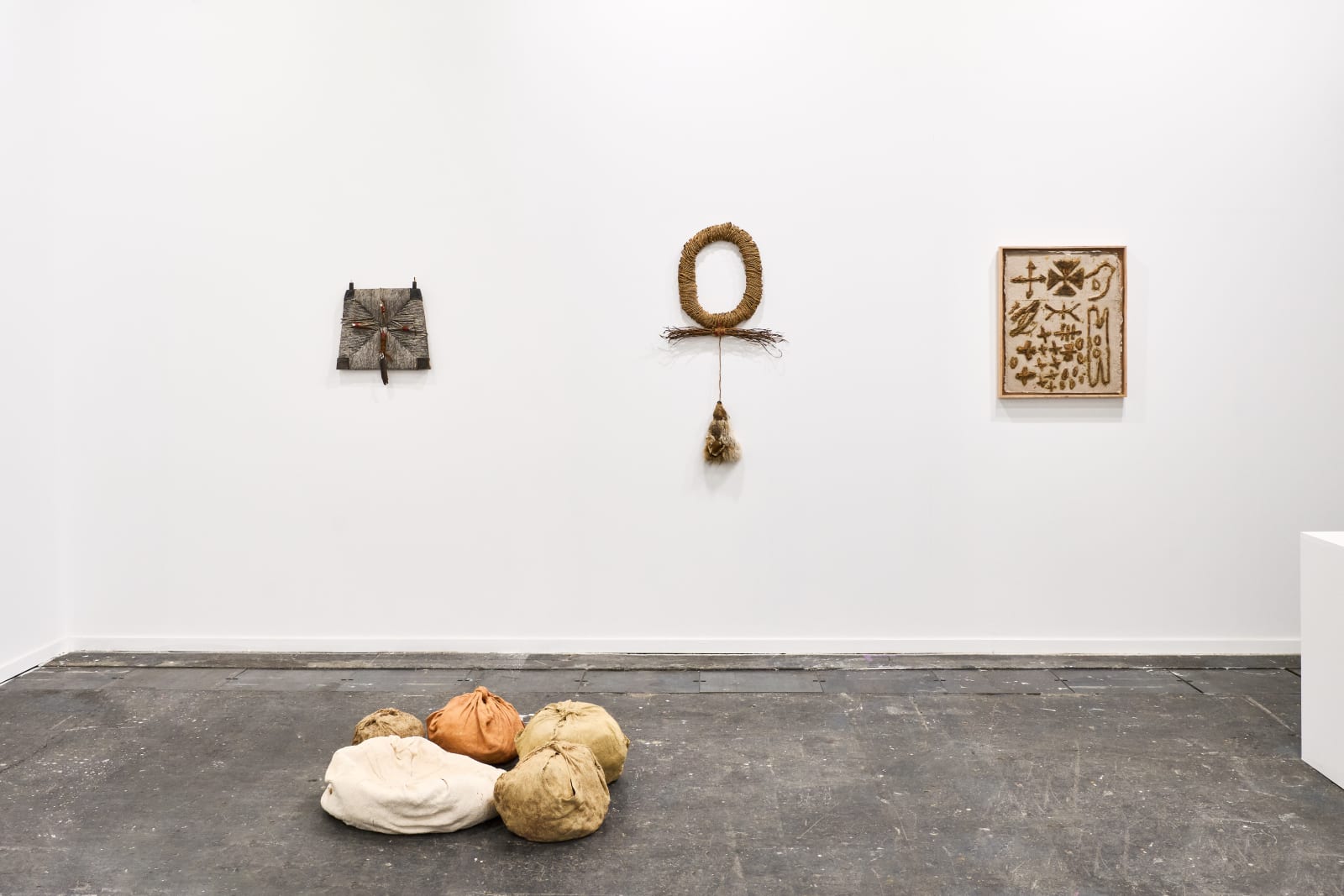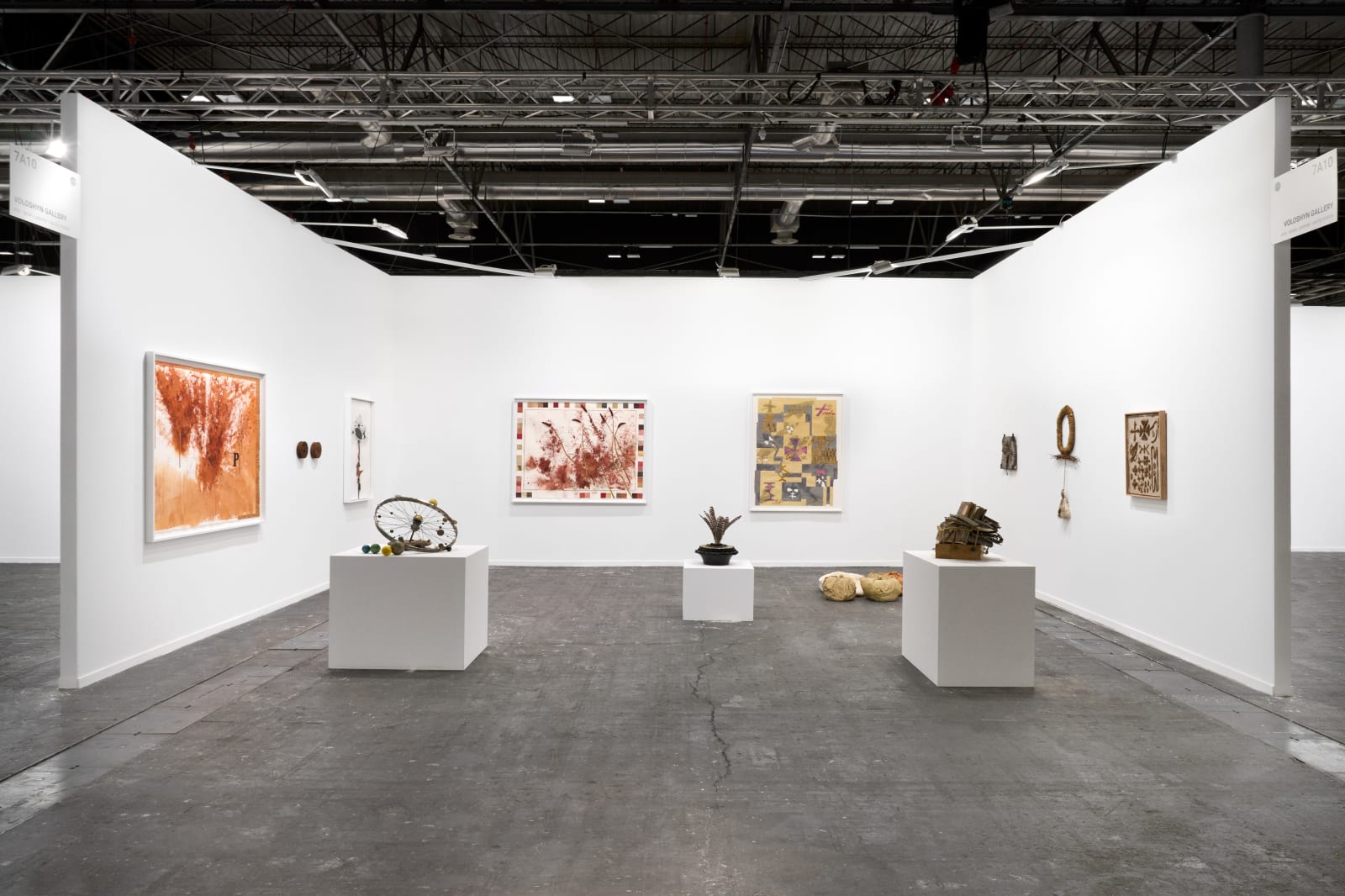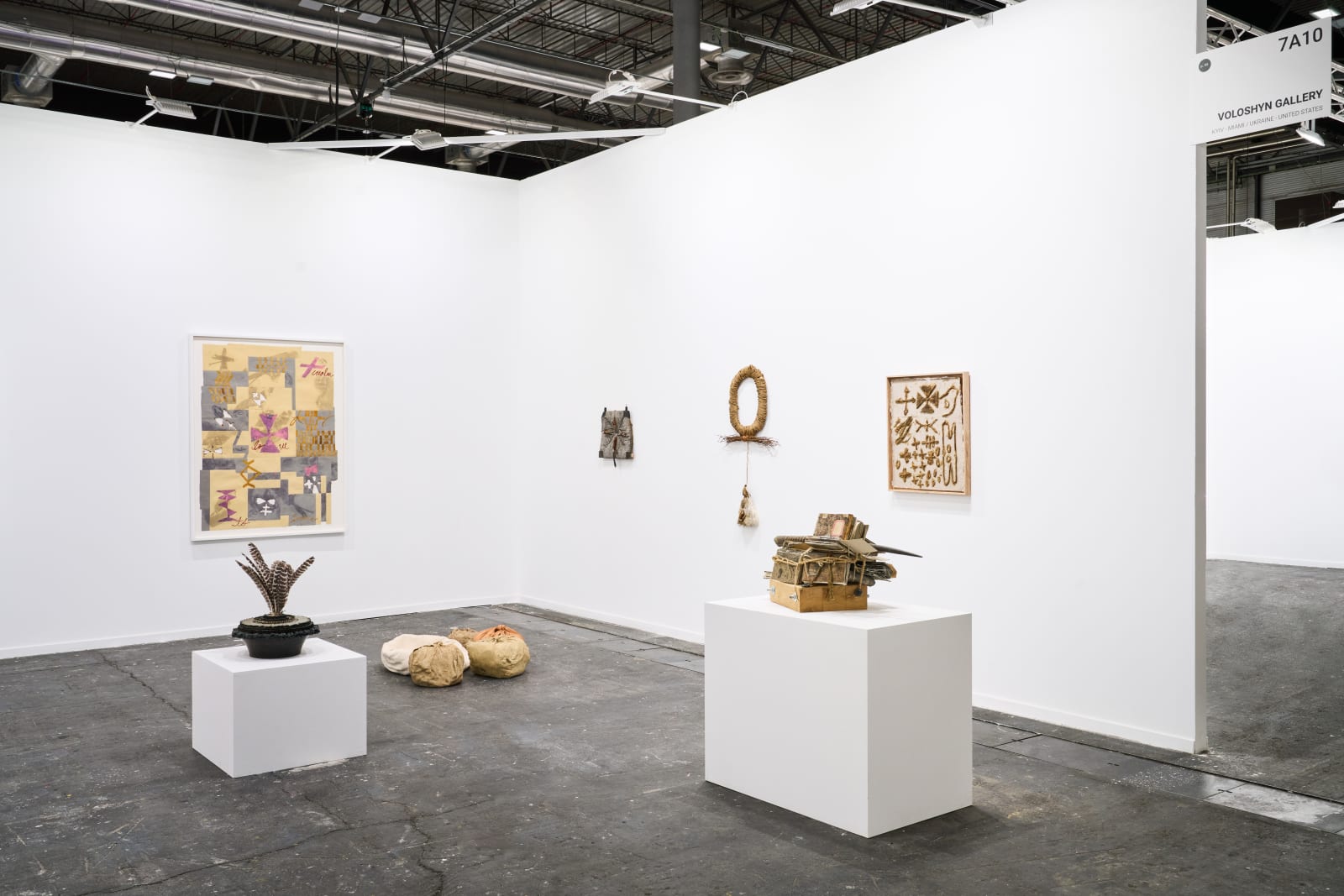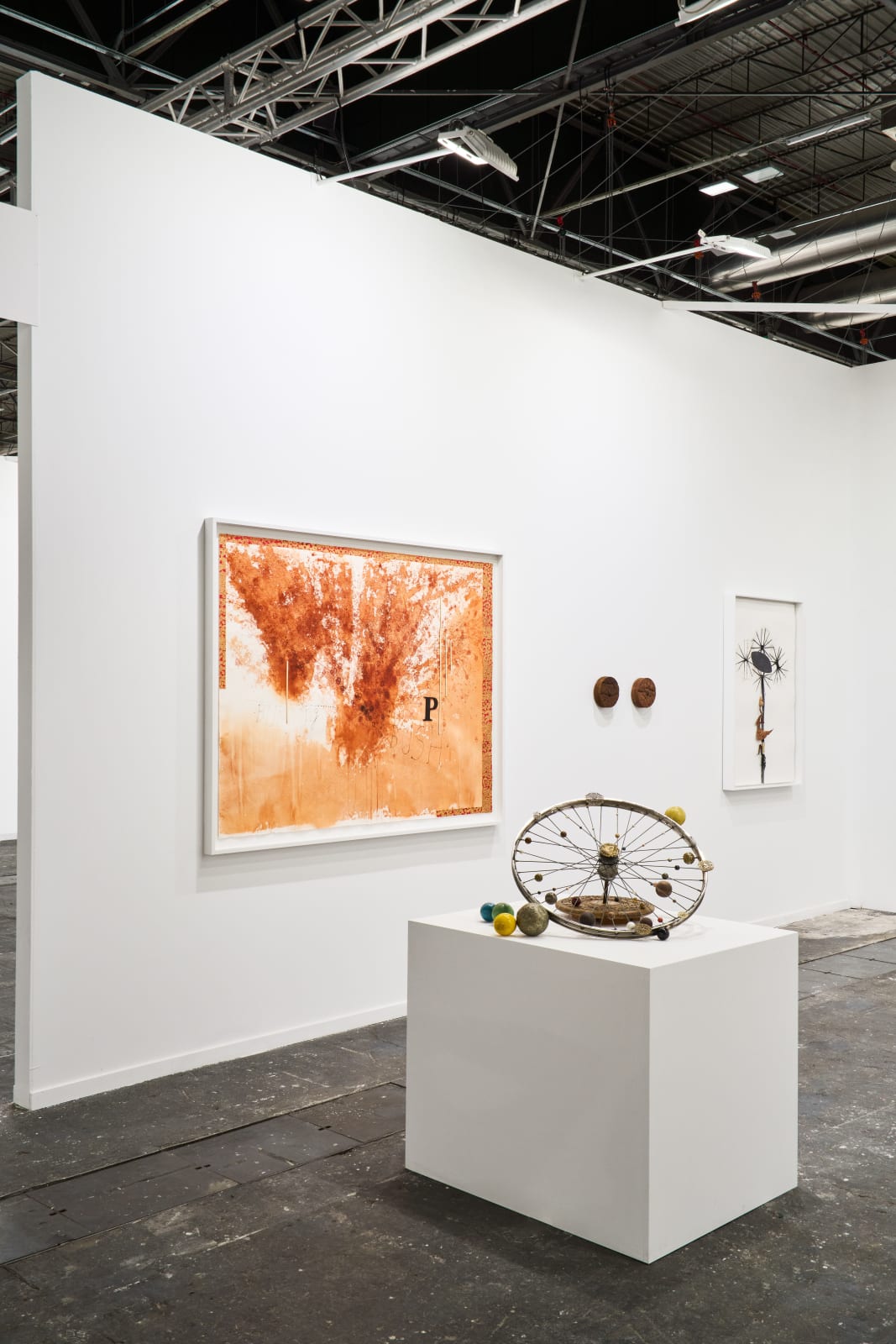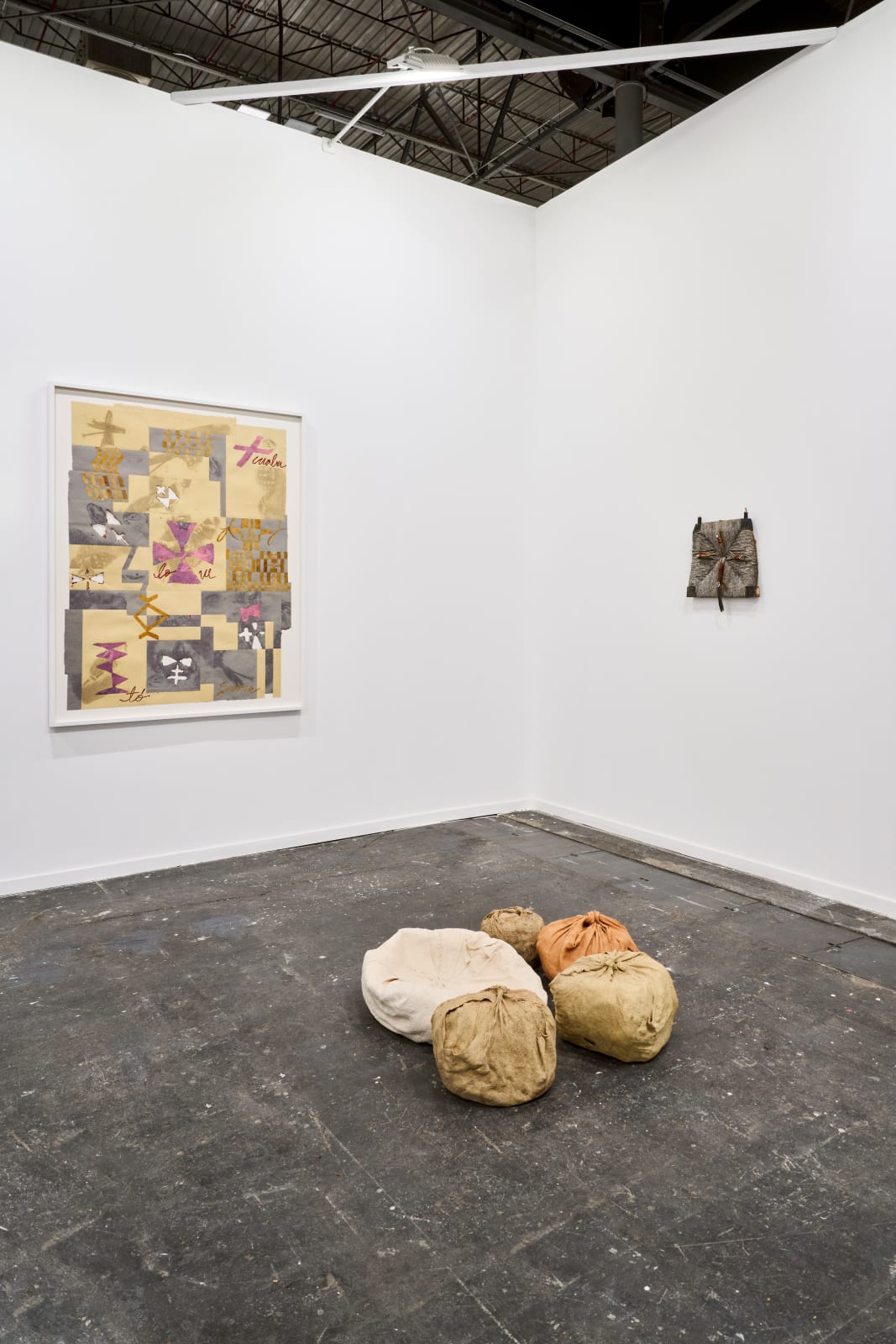ARCOmadrid 2025
Overview
Booth 7A10
Voloshyn Gallery is pleased to announce its participation in ARCOmadrid 2025, taking place from March 5–9, 2025, in Madrid. We warmly invite you to visit our booth, where we will be showcasing a selection of works by artist Jonathan Sanchez Noa, Ricardo Brey, and Harold Mendez. Curated by Gean Moreno.
Exhibition Details:
VIP access:
March 5, 11:00 to 20:00,
March 6, 12:00 to 20:00
March 7, 12:00 to 15:00
Public Access:
March 7, 15:00 to 20:00
March 8, 12:00 to 20:00
March 9, 12:00 to 18:00
March 8, 12:00 to 20:00
March 9, 12:00 to 18:00
IFEMA MADRID fairground, Madrid, Spain, Pavilion 7, Booth 7A10
“Voloshyn’s booth has been conceived as a dialogue between artists of different generations who have reinvigorated the tradition of the found object assemblage by using it to explore ways of knowing that sit at the edges of Western thinking and that often spill beyond them. Ricardo Brey (Havana,1955) borrows ideas and practices associated with alchemy in order to structure a system, halfway between science and magic, that allows him to delve into spirit worlds, post-life materialisms, transrational phenomena, vision-like intensities, and processes of transubstantiation. Harold Mendez (Chicago, 1977), a first-generation American of Colombian and Mexican descent, explores the long arc of hemispheric histories in the Americas, from the cosmogonies of the continent’s original inhabitants to the variegated diasporic knowledge that came with the migrations of people from Europe, Africa, and elsewhere. His often delicate works transact with absence, loss and the ways in which selves and histories are disarticulated and rearticulated from below. In both his elaborate handmade papers and his assemblages, Jonathan Sanchez Noa’s (Havana,1994) examines how histories of colonial extraction are haunted by the capacity of lost or smothered understandings of the world to reassert themselves. He utilizes Cuban tobacco, in particular, as a medium to reconstruct narratives of displacement in relation to cultural and religious significance.” - Gean Moreno.
Jonathan Sánchez Noa’s approach to papermaking techniques involves imprinting tobacco stain patterns directly into raw pulp slabs. Working on fragments of handmade paper, Sánchez Noa forms scattered marks of personal significance that mimic handwriting, drifting thoughts, or statements left as a signifier of importance in time and space. With much emphasis on texture and force, the works locate meaning and significance in the degree to which marks imprint within the space. Often rhythmic yet drifting around a related notion or tone, these marks leave the viewer with a fleeting impression, or one that is still in the process of actualization. These gestures vary in intensity but ultimately form a cohesive whole, expressing a personal viewpoint and ritual practice rooted in a distinct interpretation of the world.
Ricardo Brey’s mixed media works invite the viewer to ponder on the origins of humanity and humankind’s place in the world and consider them from a different perspective. He repurposes found objects, thus giving them a second life and conveying how he views art and reality through their medium. Brey continues investigating seemingly oppositional aspects of the human experience––the inherent tensions between binary concepts like life and death, dreams and nightmares, masculinity and femininity, blackness and whiteness, manmade and organic. The blending of cultural iconographies achieved via a rigorous chromatic, formal, and conceptual engagement is emblematic of Brey’s artistic ethos. Harold Mendez continues his meditations on transnational narratives that shaped the histories of the Americas with his new sculptural works and drawings. His mixed media and sculpture works address the theme of identity and the ways in which it becomes affected by geography, as well as how those concepts allude to narratives surrounding the body: its absence, visibility, and place. Mendez’s uncanny play with materials create multivalent objects and images that are strongly reminiscent of more than their prescribed function or meaning. Upon closer look, the component parts of the objects reveal themselves as reclaimed metal polishing wheels, walrus skins and owl feathers. For Mendez, all of those separate materials hold a plethora of meanings and memories, real and imagined, that are forever engrained into the object’s history.
Jonathan Sánchez Noa’s approach to papermaking techniques involves imprinting tobacco stain patterns directly into raw pulp slabs. Working on fragments of handmade paper, Sánchez Noa forms scattered marks of personal significance that mimic handwriting, drifting thoughts, or statements left as a signifier of importance in time and space. With much emphasis on texture and force, the works locate meaning and significance in the degree to which marks imprint within the space. Often rhythmic yet drifting around a related notion or tone, these marks leave the viewer with a fleeting impression, or one that is still in the process of actualization. These gestures vary in intensity but ultimately form a cohesive whole, expressing a personal viewpoint and ritual practice rooted in a distinct interpretation of the world.
Ricardo Brey’s mixed media works invite the viewer to ponder on the origins of humanity and humankind’s place in the world and consider them from a different perspective. He repurposes found objects, thus giving them a second life and conveying how he views art and reality through their medium. Brey continues investigating seemingly oppositional aspects of the human experience––the inherent tensions between binary concepts like life and death, dreams and nightmares, masculinity and femininity, blackness and whiteness, manmade and organic. The blending of cultural iconographies achieved via a rigorous chromatic, formal, and conceptual engagement is emblematic of Brey’s artistic ethos. Harold Mendez continues his meditations on transnational narratives that shaped the histories of the Americas with his new sculptural works and drawings. His mixed media and sculpture works address the theme of identity and the ways in which it becomes affected by geography, as well as how those concepts allude to narratives surrounding the body: its absence, visibility, and place. Mendez’s uncanny play with materials create multivalent objects and images that are strongly reminiscent of more than their prescribed function or meaning. Upon closer look, the component parts of the objects reveal themselves as reclaimed metal polishing wheels, walrus skins and owl feathers. For Mendez, all of those separate materials hold a plethora of meanings and memories, real and imagined, that are forever engrained into the object’s history.
About the curator
Gean Moreno is Director of the Art + Research Center at the Institute of Contemporary Art, Miami and part of the institution's curatorial team. He has recently curated exhibitions dedicated to the work of Charles Gaines, Lucy Bull, Terry Adkins, Denzil Forrester, Rubem Valentim, Shuvanai Ashoona, and Ettore Sottsass. Moreno was an adviser to the 2017 Whitney Biennial and the 2018 Creative Time Summit. In 2008, he founded [NAME] Publications, a press dedicated to field-advancing art theory, and through which he has worked with numerous international institutions, including Kunsthalle Zurich, VanAbbe Museum, MCA Chicago, and CAM Houston. His texts have been included in various exhibition catalogues and anthologies. In 2019, Verso released an anthology that he edited, In the Mind, But Not From There: Real Abstraction and Contemporary Art. He is currently Visiting Assistant Professor at Florida International University.
About the Artists
Jonathan Sánchez Noa (b.1994, Havana, Cuba) is a multidisciplinary artist working with installation, papermaking, and sculpture. He creates artworks that examine how histories of colonial extractivism have impacted notions of race, identity, and climate. He utilizes Cuban tobacco as a medium to reconstruct narratives of displacement in relation to cultural and religious significance. Through papermaking techniques, he imprints tobacco stain patterns directly into raw pulp slabs. A process informed and influenced by personal ritual, spiritual and vision interpretation of the world. Jonathan earned his BFA from The Cooper Union in 2020, and attended Skowhegan School of Painting and Sculpture in 2023. He was recently a fellow at The Bronx Museum AIM Program and resident at Santa Fe Art Institute, Dieu Donné, Pratt>FORWARD, LMCC Arts Center, Artists Alliance Inc and Constance Saltonstall Foundation for the Arts. Recent exhibitions of his work include The Sixth AIM Biennial at The Bronx Museum, Bronx, NY (2024); New Voices at Print Center New York, New York, NY (2024); Mental Spaces II at Sugar Hill Museum, New York, NY (2024); Once at Cleve Carney Museum of Art, Chicago, IL (2023); Rastros en el tiempo at The Clemente Center, New York, NY (2022); and Kunstnernes Efterårsudstilling at Den Frie Centre of Contemporary Art, Copenhagen, Denmark (2021)
Ricardo Brey (b. 1955, Havana, Cuba) is a visual artist living and working in Ghent, Belgium, since 1990. His multidisciplinary practice—spanning drawing, sculpture, and installation—centers an exploration of the origins of humanity and our place in the world. Brey’s work is rooted in a decolonial perspective, challenging dominant Western narratives while celebrating the rich syncretic traditions of the African diaspora, particularly within Afro-Cuban culture. His art embodies creolization—the blending of multiple cultural traditions into something entirely new—by merging African, European, and Caribbean influences. Through his rhizomatic approach, Brey’s work resists linear, hierarchical structures, instead developing organically and interconnectedly, much like a root system, with ideas branching out in multiple, non-linear directions. Brey’s work is featured in global public and private collections, including the Bouwfonds Art Collection, The Hague, the Netherlands; Centre Pompidou, Paris, France; Museum van Hedendaagse Kunst Antwerpen(M HKA), Belgium; Stedelijk Museum voor Actuele Kunst (SMAK), Ghent, Belgium; Suermondt-Ludwig-Museum, Aachen, Germany; Watari Museum of Contemporary Art, Tokyo, Japan, and many others.
Harold Mendez (b. 1977, Chicago, USA) is a multidisciplinary artist working with photography, sculpture and installation. His work addresses the relationships between transnational citizenship, memory, and possibility, considering how history is not only an affirmed past but a potential future. The artist’s work combines research with archival materials culled from geographic sites—objects that embody erased histories—to examine how historical constructions and geography shape our sense of self. Selected exhibitions of Mendez’s work include the 2017 Whitney Biennial, Whitney Museum of American Art; the Museum of Contemporary Art, Chicago; Renaissance Society; Museum of Modern Art / PS1, New York; Studio Museum, Harlem; Drawing Center, New York; and Museum of Contemporary Photography, Chicago.
About ArCOMADRID
ARCOmadrid is Spain’s International Contemporary Art Fair and, since its creation, one of the main contemporary art market platforms. In 2025 ARCOmadrid celebrates its 44th edition with the Amazon as the central project. The programme curated by Denilson Baniwa and María Wills in collaboration with the Institute for Postnatural Studies, Wametise: ideas for an Amazofuturism will reflect on new modes of creation that represent hybrid existences between human, plant, physical and metaphysical bodies. In addition, ARCOmadrid 2025 will once again present artistic content with the General Programme galleries, as the main axis of the Fair, selected by the Organising Committee. In the curated sections,Opening. New galleries will host a selection of galleries less than 7 years old, curated by Cristina Anglada and Anissa Touati, andProfiles | Latin American Art, curated by José Esparza Chong Cuy, will continue to strengthen the historical link between ARCOmadrid and Latin American art.
ARCOmadrid is Spain’s International Contemporary Art Fair and, since its creation, one of the main contemporary art market platforms. In 2025 ARCOmadrid celebrates its 44th edition with the Amazon as the central project. The programme curated by Denilson Baniwa and María Wills in collaboration with the Institute for Postnatural Studies, Wametise: ideas for an Amazofuturism will reflect on new modes of creation that represent hybrid existences between human, plant, physical and metaphysical bodies. In addition, ARCOmadrid 2025 will once again present artistic content with the General Programme galleries, as the main axis of the Fair, selected by the Organising Committee. In the curated sections,Opening. New galleries will host a selection of galleries less than 7 years old, curated by Cristina Anglada and Anissa Touati, andProfiles | Latin American Art, curated by José Esparza Chong Cuy, will continue to strengthen the historical link between ARCOmadrid and Latin American art.
About Voloshyn Gallery
In 2016, Max and Julia Voloshyn established Voloshyn Gallery in the heart of Kyiv, Ukraine. Situated in a historic 1913 building, Voloshyn Gallery's space provides an unconventional setting for contemporary art. It exhibits a broad range of works in a variety of media, representing both emerging and established artists. Voloshyn Gallery hosts solo and group exhibitions, works with accomplished curators and museums, and takes part in leading contemporary art fairs.
In 2022, Voloshyn Gallery made the difficult decision to close temporarily due to the full-scale invasion of Ukraine. In 2023 the gallery reopened its doors in Kyiv, Ukraine and also expanded with a space in Miami, Florida.
